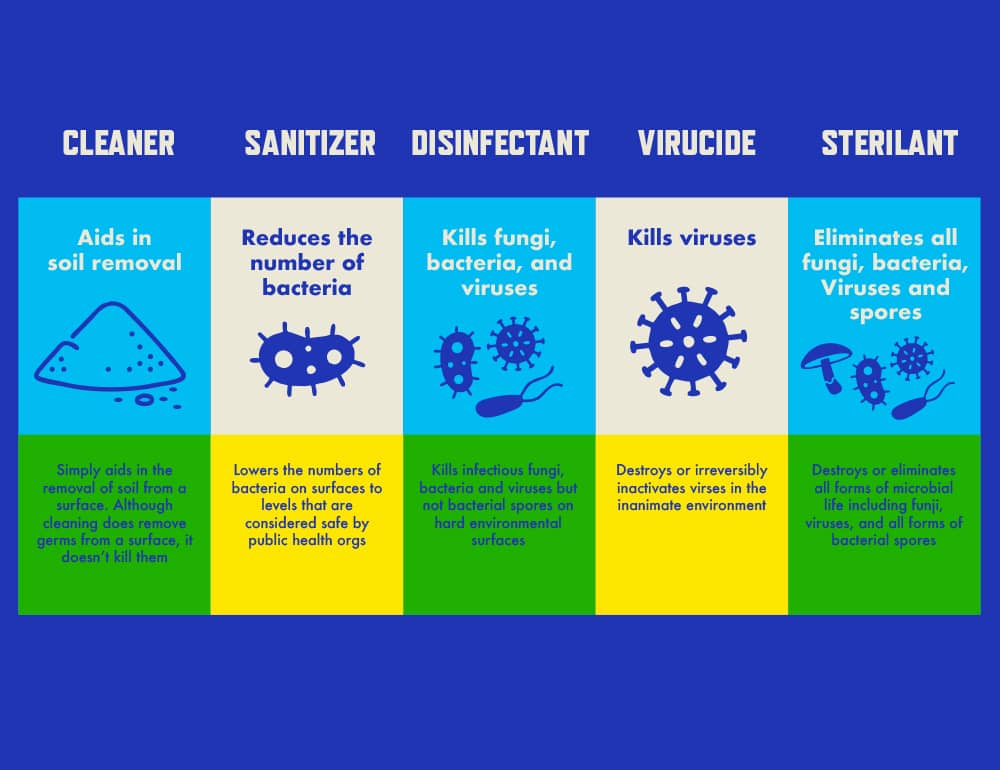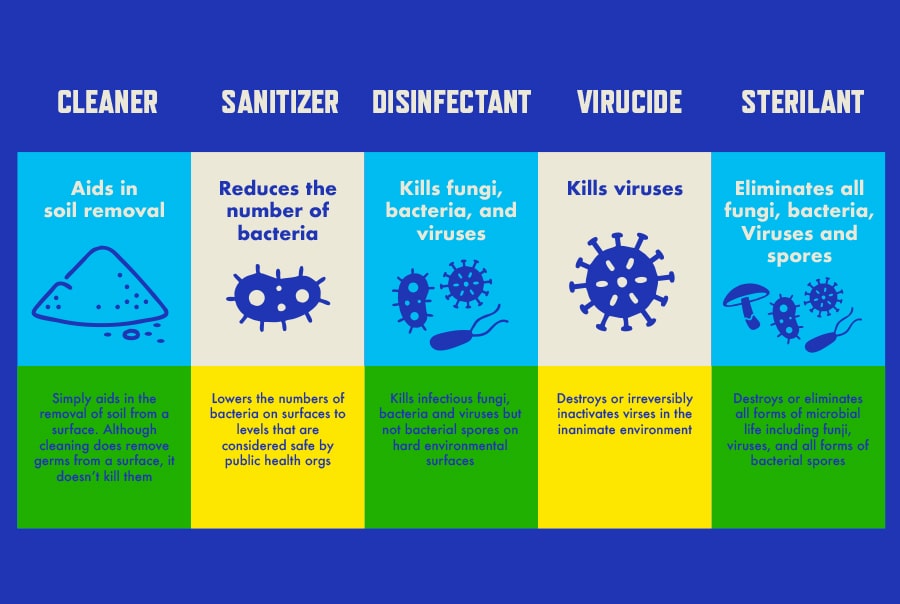
How to Sanitize Your Workplace Between Pro Cleans
by Anna Tsantir & Stephanie Watson
October 6, 2020
To help our commercial clients prevent the spread of COVID-19 and other viruses, Two Bettys created Back to Business Kits, featuring Envirox H2Orange2. It’s the same stuff our pros use when they clean and sanitize your space. Now you can learn how to use this eco-friendly, non-toxic spray to sanitize high-touch surfaces between your professional cleans.
Can’t I Just Use Bleach Wipes?
When COVID-19 came on the scene, everyone started reaching for the bleach wipes. But bleach and other traditional cleaning products can be very toxic. There are very few industry regulations for cleaning products, and companies aren’t required to list all the ingredients on their product labels.
In the battle against COVID-19, Two Bettys said no thank you to bleach products. Instead, we tapped into our green cleaning expertise to come up with a solution that’s safe for people, pets and the Earth, but not safe at all for the villainous COVID-19.
Our Hero: Envirox H2Orange2
Our Bettys trust H2Orange2 to get the job done, and now you can use it between your professional cleans.
Envirox H2Orange2 is a hydrogen peroxide-based cleaner, sanitizer and virucide in one. It kills 99% of bacteria and viruses, and is recommended by the CDC and the EPA as an effective way to eliminate COVID-19 on surfaces. The hydrogen peroxide is what gives H2Orange2 its virus-busting power—it’s a much stronger dilution than your bathroom cabinet variety.
Unlike many traditional cleaning products, hydrogen peroxide is environmentally safe and biodegradable. In fact, after being exposed to air it soon breaks down into H2O, also known as water. So it’s very safe for people, pets and the environment. H2Orange2 also contains cold-pressed orange oil which helps to cut through grease and grime (and it smells nice).
The Spectrum of Cleaning Products
Not all cleaning products are created equal. There’s a range of what they’re able to do:

For the purposes of preventing the spread of COVID-19 and other viruses in your workplace, it’s enough to clean, sanitize and apply a virucide. And good news: You can use Envirox H2Orange2 to do all three.
How to Sanitize Using Envirox H2Orange2
Sanitizing surfaces isn’t just about product, it’s a process. To kill COVID-19 and other viruses with Envirox H2Orange2, you have to use it correctly.
Step 1: Spray H2Orange2 either directly onto the surface, or onto the paper towel if you’re cleaning a sensitive area like a computer or phone. Then use a paper towel or cloth to wipe away any dirt and debris.
Step 2: Spray H2Orange2 onto the surface a second time. Leave the liquid to air dry or wipe it off after it has sat on the surface for at least 5 minutes. If you’re cleaning a sensitive area, Step 2 is to spray H2Orange2 onto a paper towel, then dab it onto the surface. Make sure the paper towel is well saturated, so enough of the liquid will transfer to the surface you want to sanitize.
After the H2Orange2 has been on a clean surface for 5 minutes, you can rest assured that it’s free of the bacteria and viruses that can make people sick. It’s important not to skip step 1, when you wipe the surface clean. The virucide can only disinfect what it actually touches. If it’s sitting on top of dirt or grime, it can’t reach the germs that might be hiding underneath.
Which Surfaces Should You Sanitize? The High-Touch Ones
To reduce the chances of COVID-19 lurking in your workplace, you don’t need to douse the entire space in H2Orange2. It’s enough to sanitize the high-touch surfaces—the areas that get touched most often. These should be treated with the H2Orange2 sanitizing process every day. Below are some of the most common high-touch surfaces in a workplace:
In an office:
- Light switches
- Doorknobs
- Arm and head rests
- Security alarm pad
- Shared phones
In a kitchenette:
- Faucet
- Soap dispenser
- Wastebasket
- Fridge and cupboard handles
In a bathroom:
- Toilets
- Urinals
- Faucets
- Soap dispensers
- Door knobs & stall locks
Depending on the workplace, there might be other high-touch surfaces to hit on your daily disinfecting rounds. These could include the interior of a work vehicle, keypads, credit card machines and shared writing utensils.
3 Pro Cleaning Tips
- Always clean from high to low. If you’re wiping down surfaces, go from the top down, so dust and dirt won’t fall onto surfaces you’ve already cleaned.
- Wear gloves. Hydrogen peroxide is nontoxic, but it can make your skin feel dry. Wear reusable rubber gloves to protect your hands.
- Sanitize super high-touch surfaces more often. Once a day might be enough for things like desktops or chairs. But if a surface gets a lot of play, like a faucet or door handle, it’s not a bad idea to sanitize it a few times each day.
Now, go get those germs!
Have questions about using the Two Bettys Back to Business Kit?
Or do you need reorder supplies? Please email us.
Need a cleaning crew?
Two Bettys would be thrilled to clean and sanitize your space. Call us at 612-720-8768 or send us an email.
Want to check out other great cleaning supplies at our shop for your home or office?
Use what the pros use! Visit our online shop.